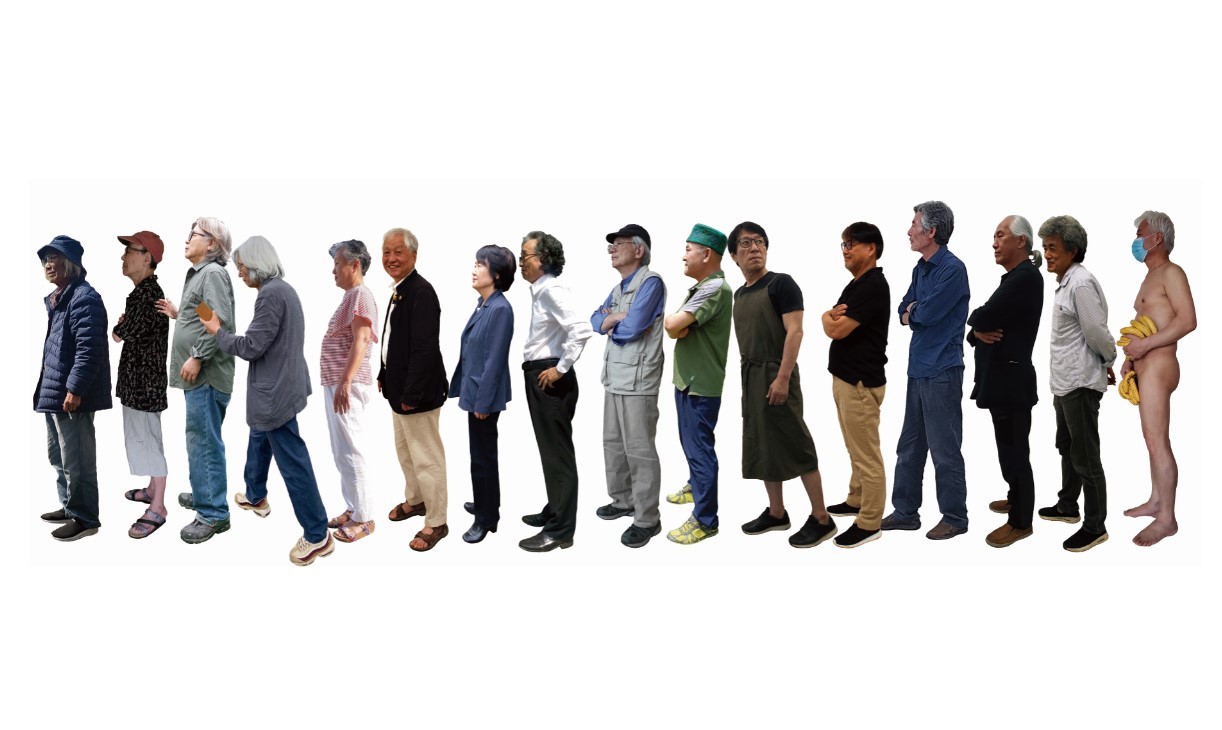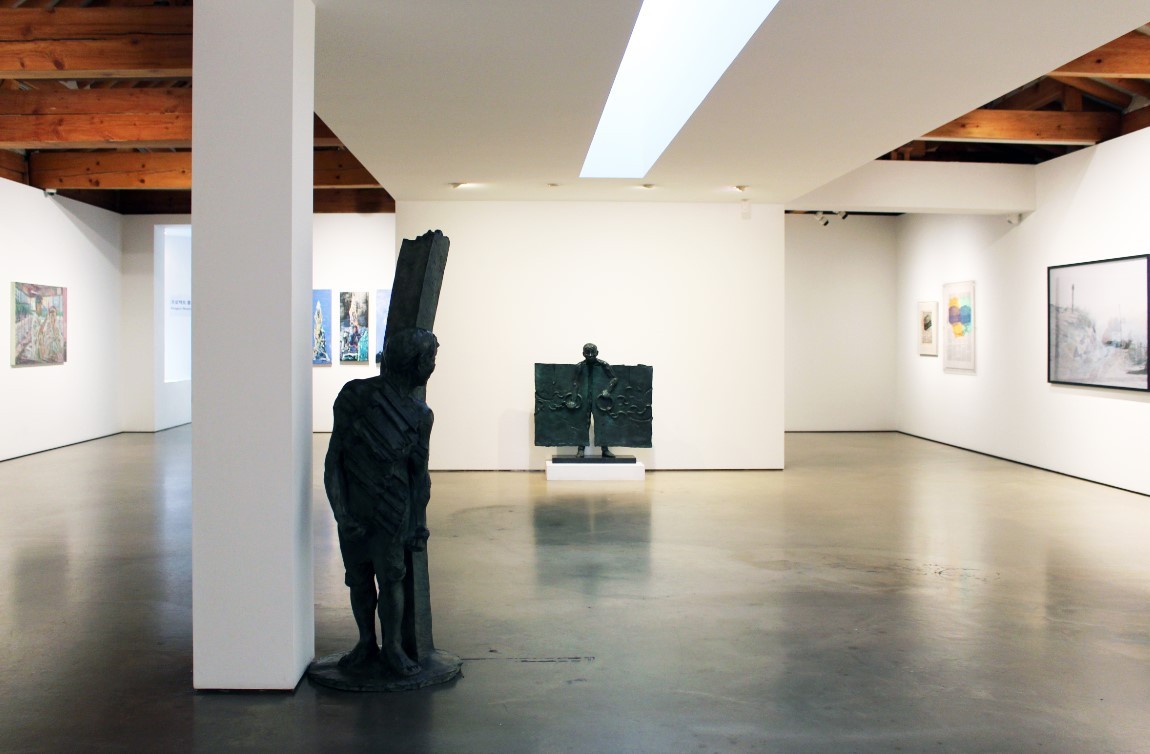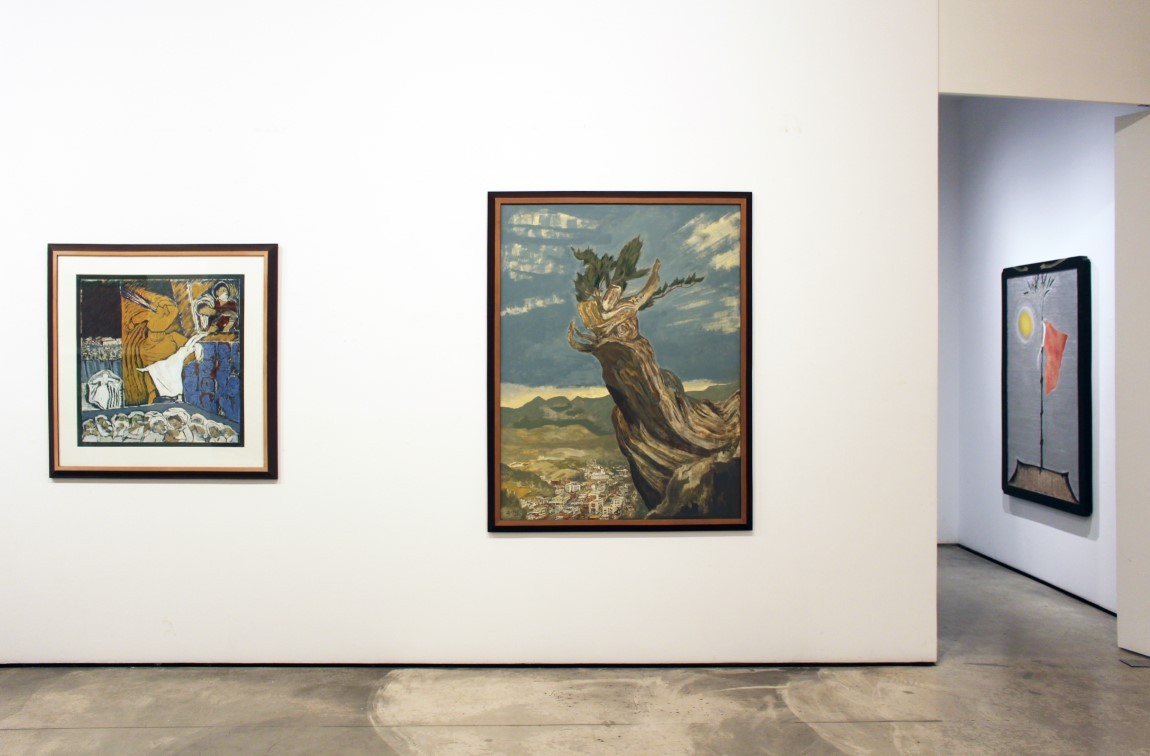The minjung art movement: The voices of artists who could not ignore social issues
Artists from Reality and Utterance, an artist-activist collective established in the late 1970s, host an exhibition in Seoul
By Park YunaPublished : July 21, 2020 - 16:40

In the late 1970s, a group of young South Korean artists rebelled against the abstract art that was enjoying widespread popularity across the country. They believed the art world was overly focused on aesthetics at the expense of social issues.
At the time, Korea was undergoing rapid industrialization and was ruled by an authoritarian military regime with no regard for human rights.
In 1979, around 20 like-minded artists who believed that art should reflect the reality of people’s lives began to gather in Seoul and formed a group that was later named Reality and Utterance.
They hosted exhibitions and discussed the role of art in society during that time of turmoil. They critiqued each other’s work, sometimes harshly. Reality and Utterance founded the minjung art movement, which literally means “art for the people” in Korean.
After 40 years, the artists -- whose average age is now 73 -- are hosting an exhibition at Hakgojae Gallery in Jongno, central Seoul. Along with their old works from the late 1970s and 1980s, they have unveiled new works. The gallery is displaying 106 artworks by 16 artists from Reality and Utterance.

In the main exhibition hall stands a 60-centimeter-tall bronze sculpture of a pro-democracy activist running away from the police. The man is hidden behind a post, fist clenched, looking over his shoulder. Titled A Steady Gaze, the work was made by sculptor Shim Jung-soo in 1984 after he witnessed the Gwangju Democratic Uprising. In May 1980, martial law troops mobilized in Gwangju to suppress the demonstrations killed more than 200 citizens and wounded more than 3,000 -- the greatest show of military force since the Korean War.
“As an artist, I wanted to bluntly show what Korean society was actually facing at the time. I wanted to stay away from vestiges of Japanese colonization and influences from Western art,” Shim told The Korea Herald.
Cartoon artist Park Jae-dong, a member of Reality and Utterance, drew sarcastic cartoons that offered social and political criticism.
“We questioned ourselves: ‘If paintings could talk, what messages should they deliver?’ or ‘Can artists neglect the reality of what is happening now?’” Park said.
During the Gwangju Democratic Uprising, many of the city’s residents, including homeless people, rose up against the military government and fought for democracy. Painter Shin Kyoung-ho picked up a pair of rubber shoes after the event and concluded that the wearer must have perished at the hands of the troops. Shin painted a funeral portrait of this anonymous fighter, with the rubber shoes in place of a face. He titled the work “With and Without Soul -- The Missing.”
“At the time, Korean art fell for Korean-style monochrome paintings or ‘dansaekhwa’ paintings. I wanted to counter that trend. As an artist, I thought we had to speak up to the press, society and the world about what was going on in society,” Shin said.

The artists of Reality and Utterance are carrying on their artistic vision -- that artists should stay aware of social issues. Artist Ahn Kyu-chul, a member of Reality and Utterance and a professor at the Korea National University of Arts, said the spirit of minjung art still lives on in his art.
His recent work, “Colors of Promises,” was inspired by presidential election posters. The work consists of 69 colored blocks, representing campaign posters stripped of their content. To the right is a list of election slogans, which all look similar regardless of the candidates’ political ideologies.
Discussing the role of minjung art today, Ahn said it entails a critical attitude toward society and toward the art industry. For instance, Ahn said the COVID-19 pandemic had given people time to look back on the art world, which until now has pivoted around powerful countries, galleries and curators influenced by capitalism.
“The COVID-19 pandemic has paused international art events including major biennales. I think it is good timing for us to think about contemporary art: ‘Where is the art world heading now?’ ‘What have we accomplished so far?’ and ‘What is the role of artists?’ are important questions to us.”
By Park Yuna (yunapark@heraldcorp.com)








![[Kim Seong-kon] Democracy and the future of South Korea](http://res.heraldm.com/phpwas/restmb_idxmake.php?idx=644&simg=/content/image/2024/04/16/20240416050802_0.jpg&u=)








![[KH Explains] Hyundai's full hybrid edge to pay off amid slow transition to pure EVs](http://res.heraldm.com/phpwas/restmb_idxmake.php?idx=652&simg=/content/image/2024/04/18/20240418050645_0.jpg&u=20240418181020)

![[Today’s K-pop] Zico drops snippet of collaboration with Jennie](http://res.heraldm.com/phpwas/restmb_idxmake.php?idx=642&simg=/content/image/2024/04/18/20240418050702_0.jpg&u=)